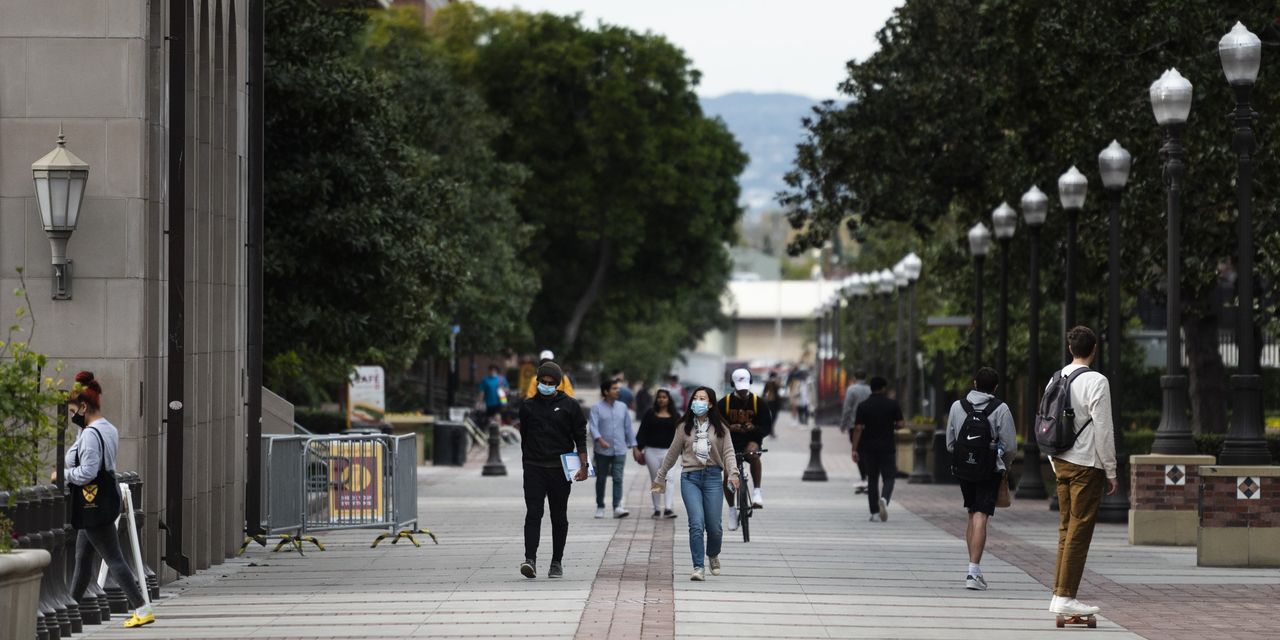
Borrowers of federal student loans need to get ready to start making payments again. The current suspension of federal student-loan repayments was extended through May 1. It’s possible that the pandemic-inspired suspension, in effect since early 2020, could be extended. The government also could cancel certain student-loan debt entirely, as some advocates are pressing for. But, meanwhile, borrowers need a game plan.
Here are some answers to questions about what to do.
Q. What can I do now to prepare?
A. Get organized. Update your contact information with your loan servicer and on studentaid.gov. Review your repayment-plan options using the Federal Student Loan Simulator tool at studentaid.gov/loan-simulator to see if you might be better off with a different plan, such as an income-driven repayment plan, where payments are tied to your income and family size.
Some borrowers might have to take additional measures, such as finding a higher-paying job, taking on additional work, selling personal belongings, finding less-expensive housing or borrowing from family or friends. A November study from Bankrate.com and BestColleges.com found three in five borrowers who earn at least $100,000 a year will need to take some form of additional action to pay down their student debt. This figure climbs to 71% for those earning between $50,000 and $99,999 a year, and to 72% for those earning less than that.
Q. Will auto-debit payments resume?
A. For most borrowers who were making automatic loan payments from a checking account, those payments won’t restart automatically. You will need to opt in again, according to Federal Student Aid. Review your auto-debit enrollment or sign up for this service before payments resume.
Q. Will my monthly payment remain the same?
A. Many borrowers will have the same interest rate, but that may not be the case if, for example, you consolidated your loans during the pause, according to Federal Student Aid. Contact your servicer for details about your rate.
SHARE YOUR THOUGHTS
How are you preparing for the resumption of student loan payments? Join the conversation below.
Q. What if my monthly payment is still too high?
A. You might be able to lower your monthly payment by switching to an income-driven repayment plan. If you aren’t eligible for one of these plans, talk to your servicer to see what other options exist.
Q. What if I have loans in default?
A. For covered loans that are in default, collection activities shouldn’t resume until after May 1, according to the National Consumer Law Center’s Student Loan Borrower Assistance Project, a resource for borrowers, families and student-loan borrower advocates. So until then (or if the pause is extended) you shouldn’t be getting collection calls, emails or texts, and you shouldn’t have wages garnished or money taken out of your tax refunds or Social Security benefits. To improve the chances that a tax refund, if any, will be paid out before the Education Department can resume seizing tax refunds, borrowers in default might consider filing their taxes early, according to the Student Loan Borrower Assistance Project.
Q. What other options could borrowers look into?
A. Job seekers and current workers should ask employers about any student-loan reimbursement programs available through the company or organization, says Stacey MacPhetres, senior director of education finance at Bright Horizons EdAssist Solutions, which provides tuition and student-loan assistance to employers. The Goodly Jobs Board, available at goodlyapp.com/payoff, lets job seekers browse job postings from thousands of companies that offer student-loan benefits. Employers can contribute as much as $5,250 per employee annually toward eligible education expenses, like student-loan assistance, without increasing the employee’s gross taxable income.
Ms. Winokur Munk is a writer in West Orange, N.J. She can be reached at [email protected].
Copyright ©2022 Dow Jones & Company, Inc. All Rights Reserved. 87990cbe856818d5eddac44c7b1cdeb8







